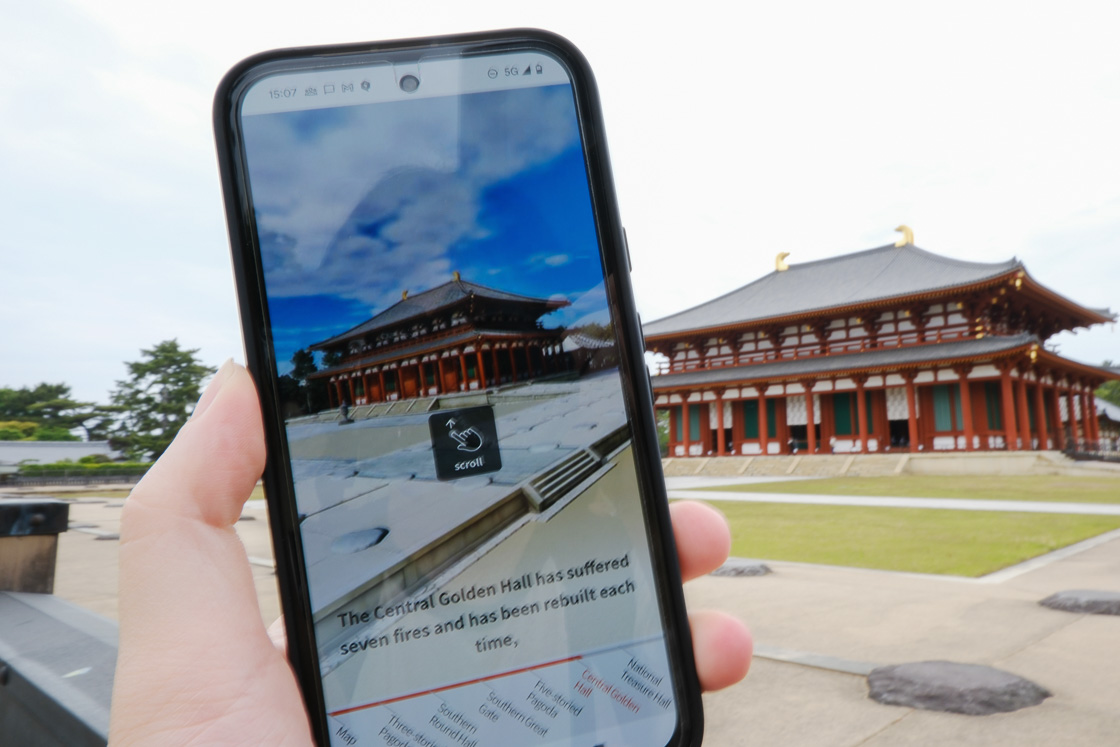A Hands-on Experience of Buddhist Culture in Nara
Nara is best known for its deer and its ties to Japanese Buddhism. Many of its temples and the treasured statues within them have history stretching back over 1,300 years, which can make a visit to Nara feel overwhelming. Where do you look? What are you supposed to do? How do you even begin to understand the rich culture of Japanese Buddhism?
For this two-day trip to Nara, I focused on getting to know one historically important temple through different ways of engaging with its culture, history, and architecture. Kohfukuji Temple is located at the entrance of Nara Park, so every day, many people (and deer) pass through its grounds. This ancestral temple of the powerful Fujiwara family was established in 710, and today it has over 100 cultural properties and National Treasures.
Aside from learning about the temple itself, I included activities that gave me a better understanding of some meditative art forms that have been influenced by Buddhism: calligraphy, the tea ceremony, and Noh theater. In some cases, Kohfukuji itself had an influence on their development!
Day 1 - Statues, Ink and Noh
Kohfukuji Temple is roughly a 15 minute walk from JR Nara Station and about a 5 minute walk from Kintetsu Nara Station. Both routes have easy access from Kyoto or Osaka. The temple's octagonal Southern Round Hall and brightly colored Central Golden Hall are familiar sights for anyone who knows their way around the Nara Park area. However, something is different now about the landscape: The Five-storied Pagoda National Treasure, a signature element of the Nara skyline, has been entirely hidden from view by a layer of scaffolding. The pagoda is undergoing vital repairs to ensure it remains standing for many more years to come.
This pagoda, one of the many National Treasures at the temple, was first erected in 730, but the current construction dates to 1426. It has been about 120 years since the last time it underwent reconstruction; some structural elements have started to bend and break, and many roof tiles have been worn down and will need to be replaced. The painstaking repairs are expected to about ten years to complete. Thankfully, there is a different way to appreciate the pagoda for now, which I saved for the second day of my trip.
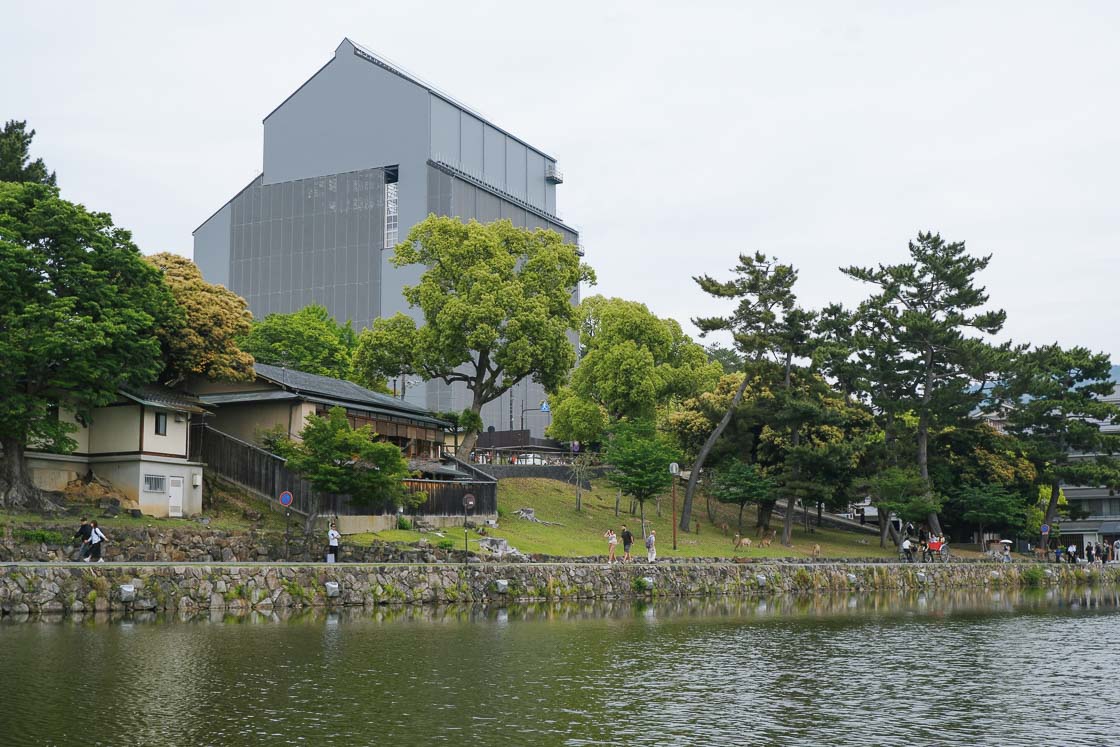
The first stop on my first day was an informative visit to the Buddhist Sculpture Hall at the Nara National Museum. The French Renaissance style building is filled with statues spanning centuries of style and subject matter across the Buddhist pantheon. They range in size from household devotional statues that fit in the palm of one's hand to an intimidating pair of Guardian Kings that stand over five meters tall. The museum lighting and layout allow a clear look at the details, like how the bones, eyes, and veins all bulge with power. In other displays, statues are arranged so that your eyes meet the Buddha's peaceful gaze.
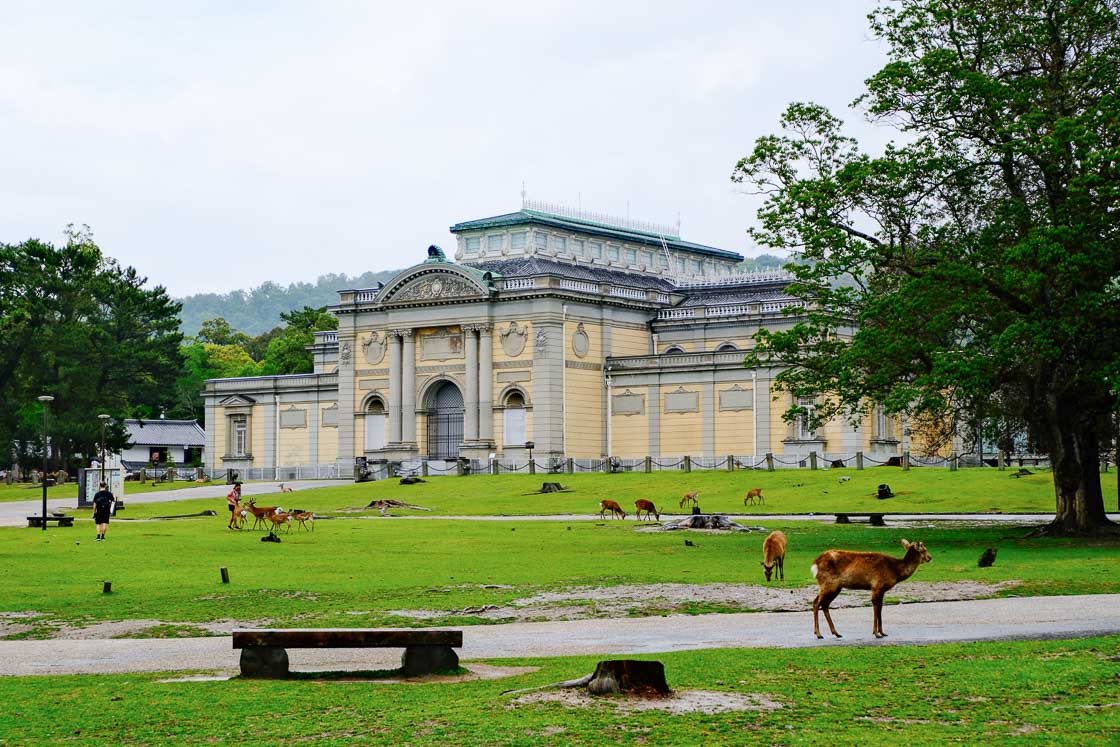
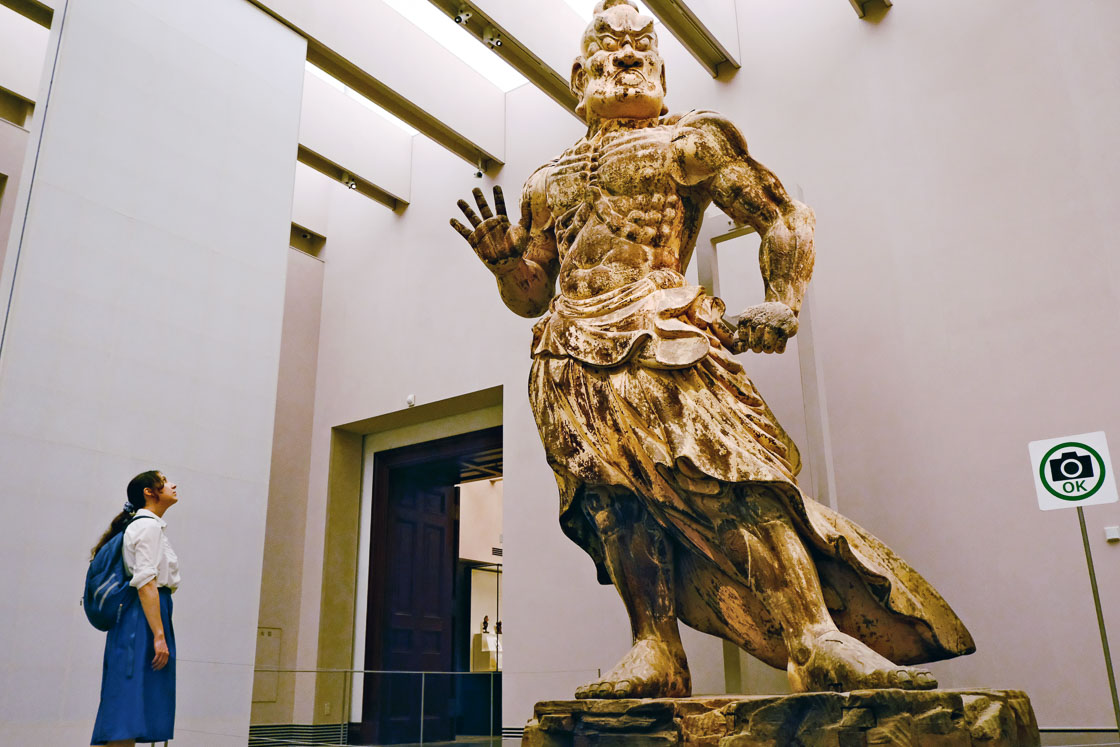
English labels throughout the museum give context for each item. These describe not only the deities depicted but also how many times some statues changed hands over the centuries as they were passed between different worshipers. The underground corridor, which connects to the East and West Wings of the museum, has interactive displays that provide more detail about the common artistic attributes and construction of Buddhist statues.
My mind was stuffed with new information after my visit, so visiting Cha no Yu for a relaxing lunch was the perfect next item on my itinerary. A 20 minute walk from the museum took me weaving through Nara Park and then around the alleys of Naramachi, an area of town with many traditional townhouses. Cha no Yu is tucked down a narrow side street. The little restaurant serves healthful meals in colorful arrays of small dishes, and it is especially known for the foot baths that accompany every meal.
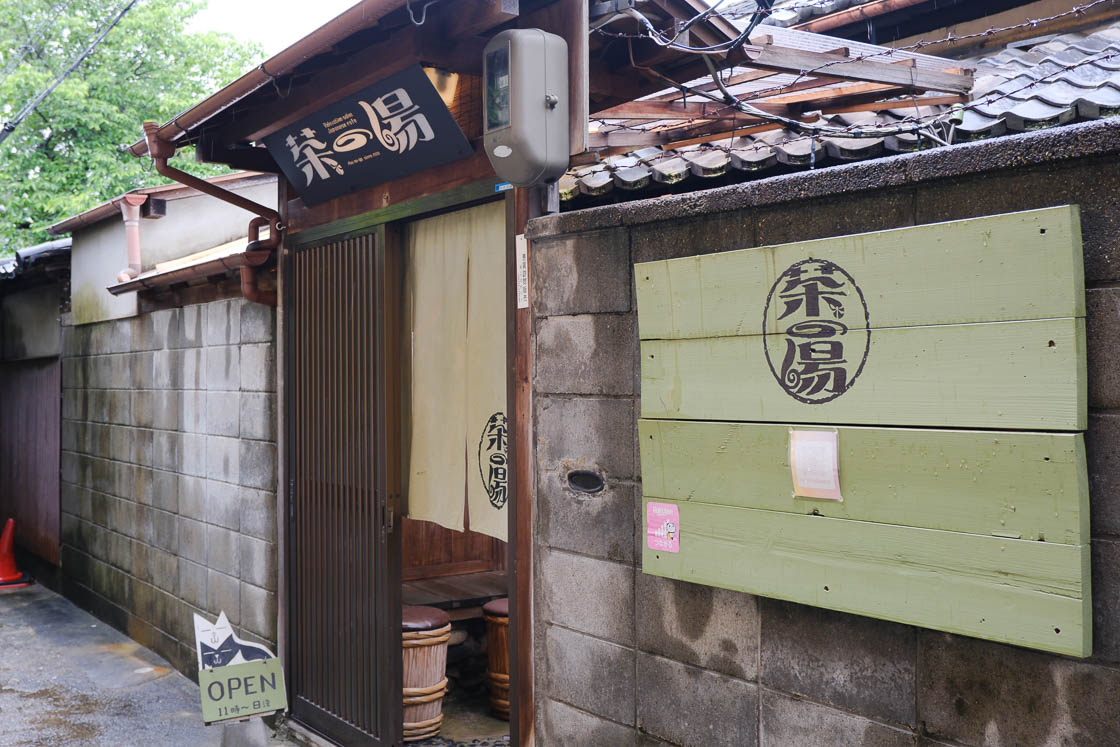
The meal was refreshingly simple. Fresh vegetables, quality meat, brown rice, and no flour or excessive oil. The creative flavor profiles kept my mind and palate curious. Who knew cinnamon and red cabbage would pair so well? My meal showed how different preparation methods bring out different flavors of the same vegetable.
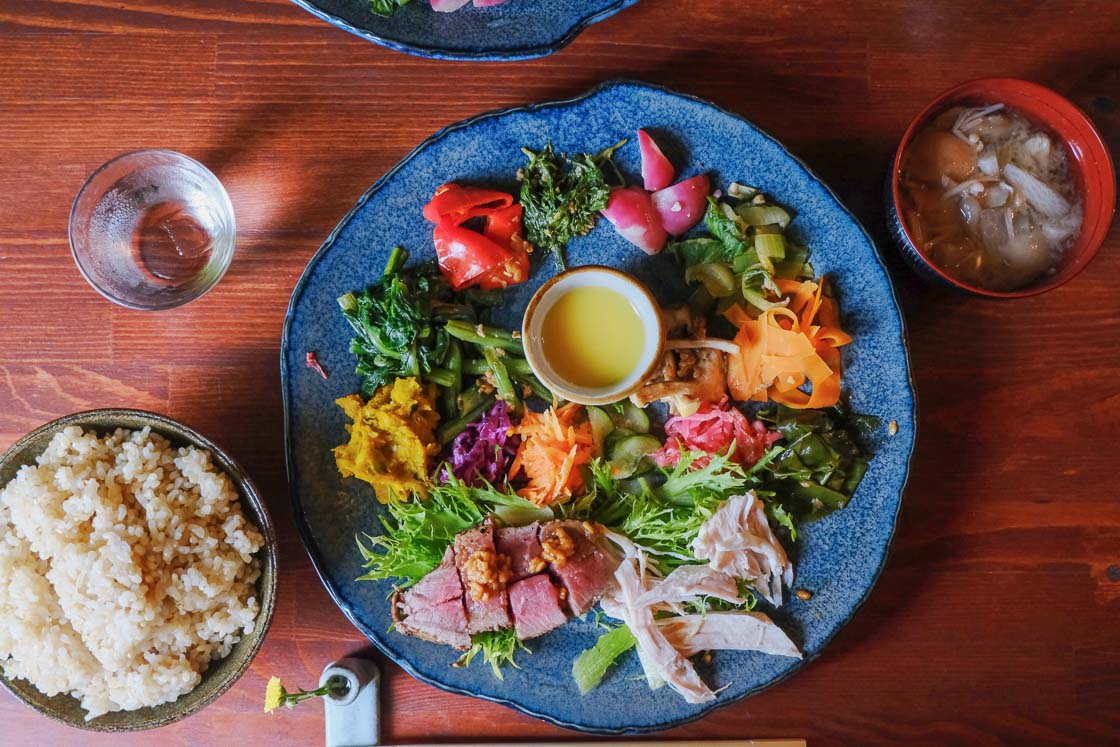
Patrons enjoy their meals while soaking their feet in cedar tubs from Yoshino, a region in southern Nara that is known for its lumber. Each tub has stones at the bottom to massage your feet and floating cloth sacks filled with tea or rice bran as a nice spa treatment. As your feet soak, the hot water (replenished every fifteen minutes) turns either matcha green or white as polished rice. Due to the time required for this level of attentive service, reservations are highly encouraged.
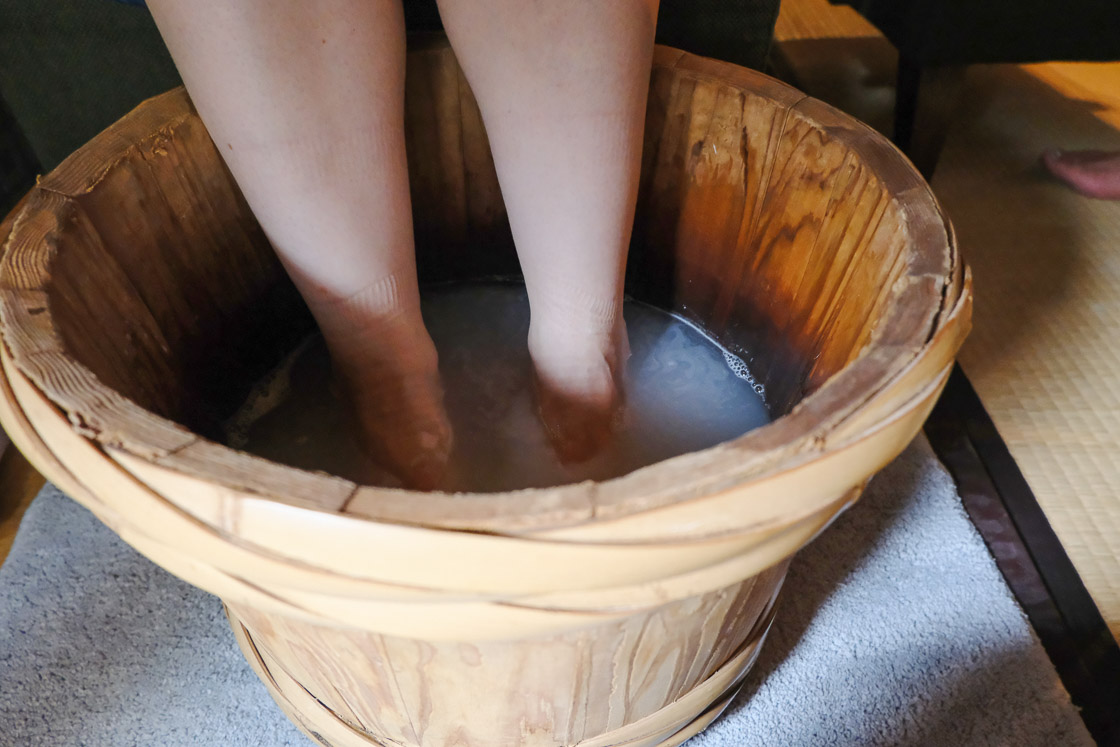
After such a relaxing mental and physical reset, I was ready for a workshop activity at Kinkoen, an ink studio in the Naramachi area. Kinkoen is a small shop with a long history, and they specialize in an art form seen less and less in Japan: solidified ink, which must be ground down before use. For people who engage in calligraphy, painting, or the meditative practice of writing, the grinding of the ink against an inkstone - the repetitive motions, soft sounds, and slow release of the ink's fragrance - is an important first step that settles the mind.
The history of ink in Japan is closely tied to both Nara and to the spread of Buddhism. Ink, first brought to Japan in 610, was a popular import from the Asian continent. As the spiritual practice of copying Buddhist sutras became more widespread in and around the ancient capital, the demand for ink exceeded the imported supply. There is a pervasive myth that the famed monk and calligrapher Kukai (774-835) taught people how to make ink with lamp oil at Kohfukuji Temple's Nitaibo Hall. Although that detail is likely untrue, Kohfukuji did become a major center of ink production during the centuries that followed.
When Kinkoen opened for business about 150 years ago, Nara already had a long established reputation for producing high quality ink and brushes. Although demand has decreased due to the convenience of liquid ink, the craftsmen at Kinkoen persist in the long process of collecting pine soot, kneading it with other ingredients, then molding, drying, and polishing the solid ink. The final form is both decorative and functional. The full process takes months, though I was able to observe part of it while making my visit to the workshop.
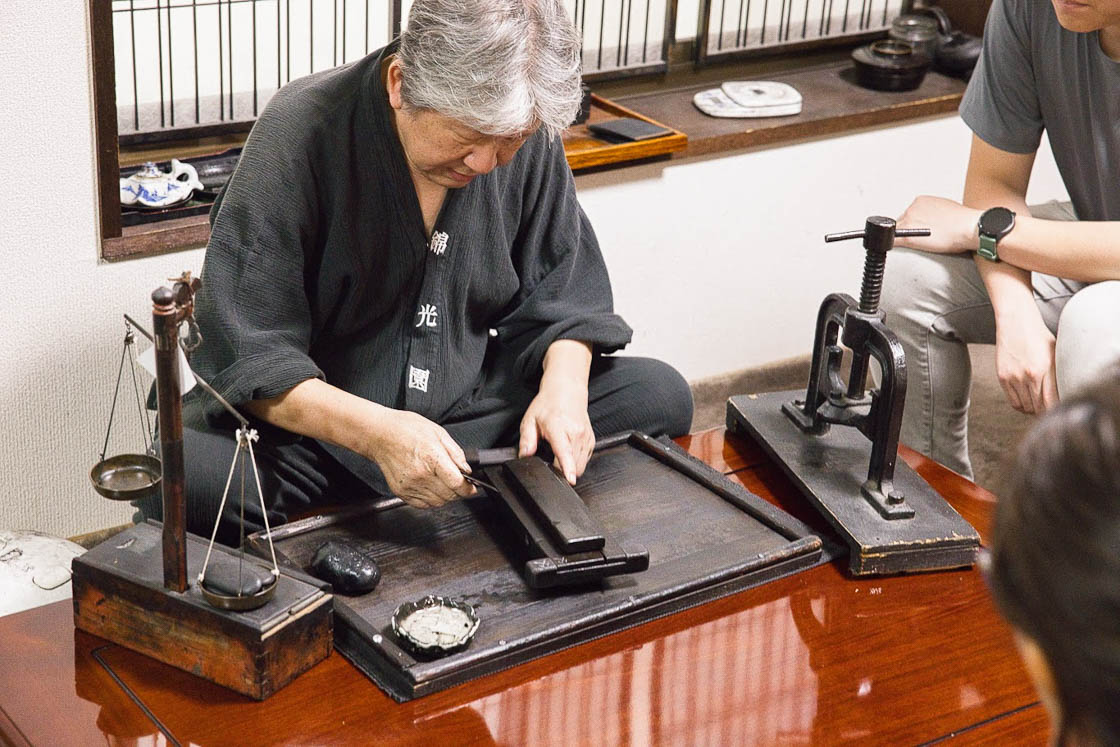
The "handheld ink" (Nigiri Sumi) workshop, as the name suggests, is literally a hands-on experience. It results in a solidified imprint of your hand, a moment captured in time. Because it was a moment that will only come once, I tried to be mindful of every detail - the glob of kneaded ink felt sticky and firm in my grip, but it also had a comforting warmth.
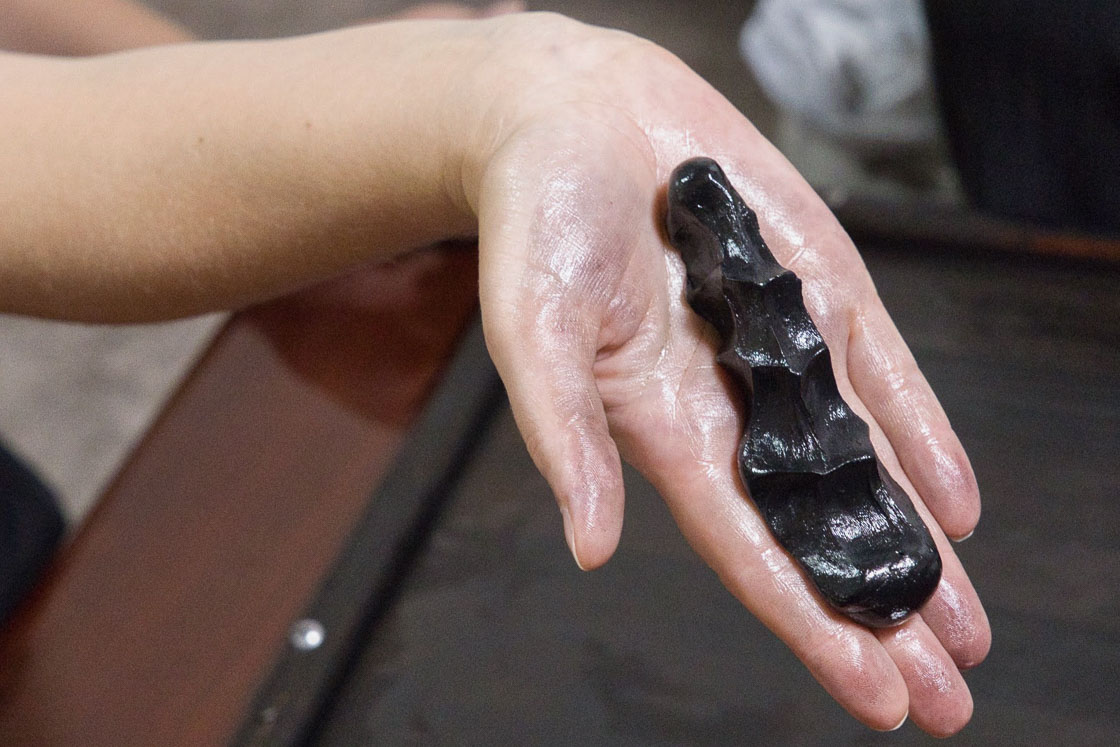
It will still be three months until I can use my handheld ink, since it needs time to dry inside of its paulownia wood box. I got some instant calligraphy gratification by writing my name on the box in Japanese. Perhaps my writing was not as elegant as that of ancient monks and courtiers who regularly practiced copying sutras, but everyone has to start somewhere.
Nara is equally famous for producing calligraphy brushes, so it was easy to start my calligraphy journey. After Kinkoen, I walked to Isshindo, a nearby shop that specializes in selling high quality ink, inkstones, paper, and brushes of all sizes and materials.
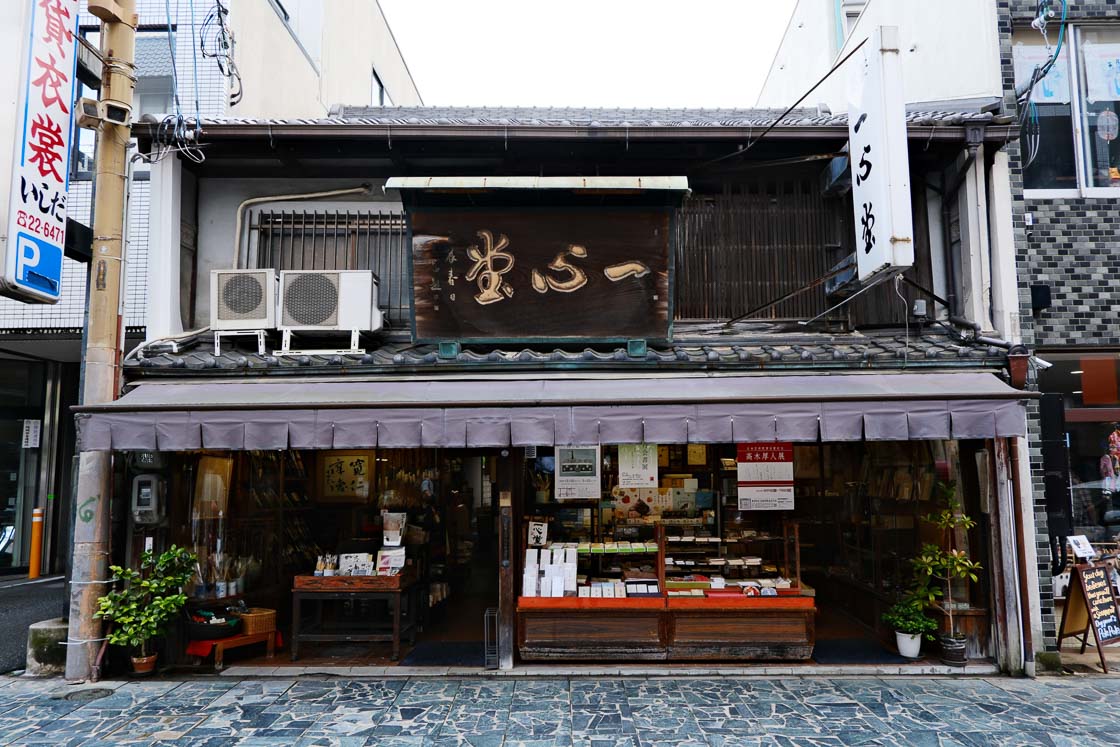
The shop owner was happy to suggest materials for a beginning calligrapher, especially after asking me to consider what sort of space I will practice calligraphy in. He started by pointing out a couple of thin brushes for the practice I had in mind, and then we had fun looking at the wide variety of brushes made of everything from straw to cat hair. The staff also regularly provide advice on which materials easily fit in a suitcase and can be used for long term practice.
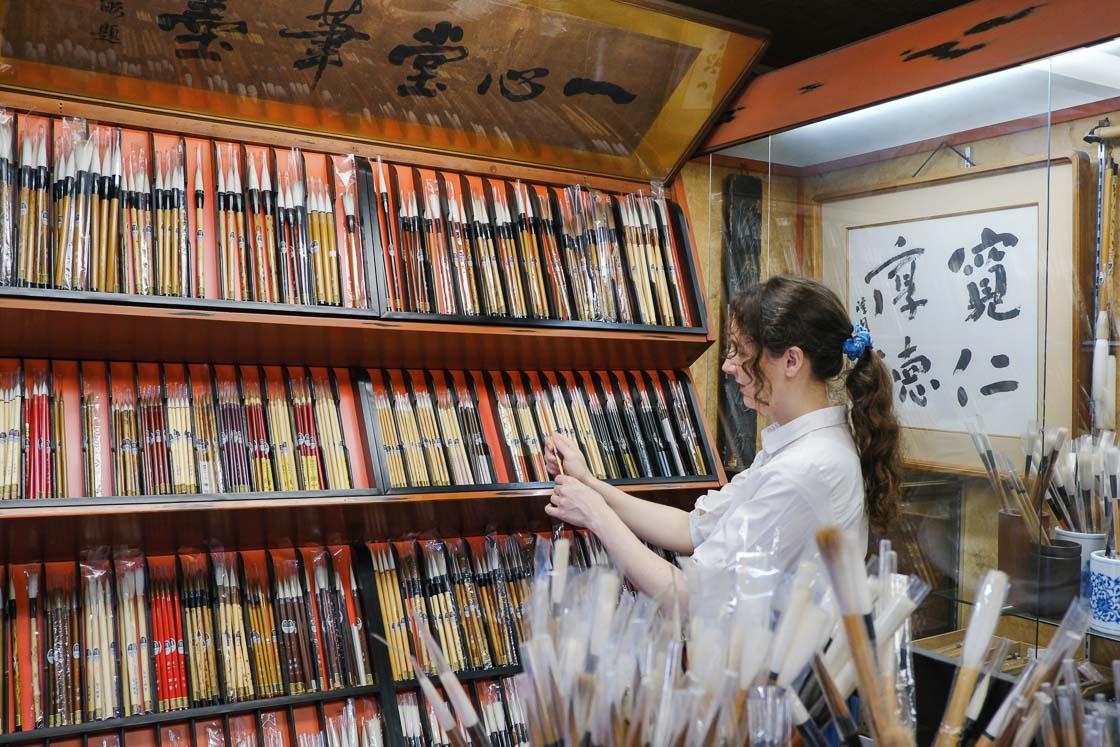
The afternoon slipped by, and it was soon time to head back up the main street to Kohfukuji Temple. Most temples are closed to the public at night, but throughout the year, there are many reasons to visit Kohfukuji after dark. For example, the temple sometimes hosts special chances to enter the buildings at night, and every August, this temple is one of the many sites in Nara that are lit up with thousands of lanterns for the Nara Tokae Festival (held August 5 to 14 in 2025). As another example, there are nighttime Noh performances held at Kohfukuji twice a year.
Noh is one of the oldest theatrical forms in the world and one of the most sophisticated art forms in Japan. Noh's current form dates back to the fourteenth century, a time when influential playwrights created what are now some of the most famous works of the Noh canon. However, Noh has roots in folk arts that stretch back even further. In the early Heian period (794-1185), Kohfukuji was the first place where these folk arts were performed by firelight as an offering to the Buddha. They were merely an extra, though the primary offering was the sacred firewood (takigi) itself. This is the origin of fireside nighttime Noh performed throughout Japan. At Kohfukuji, it is called "Takigi O-Noh".

As Noh developed, its performances incorporated more and more Buddhist influences while also striving to give the audience a sense of yugen, sometimes translated as "subtle profoundness." Yugen is also described by Noh actors as a "dreamlike state".
Kohfukuji hosts Takigi O-Noh for two nights every May, and I attended one of these performances. Noh performances often unfold in a nonlinear way, and listening to the chanters express thoughts that a character may not have their own words for as I watched a dance that expresses raw emotions to animate seemingly expressionless masks did draw me into a dreamlike state, especially with the glow of firelight. That does run the risk of making many audience members sleepy, though, especially those who do not speak the language. Thankfully, the organizers of this event provide live English commentary via a webpage to describe the events of the story and meanings of the props and actions, which makes for an insightful, beginner friendly experience of this theater tradition.
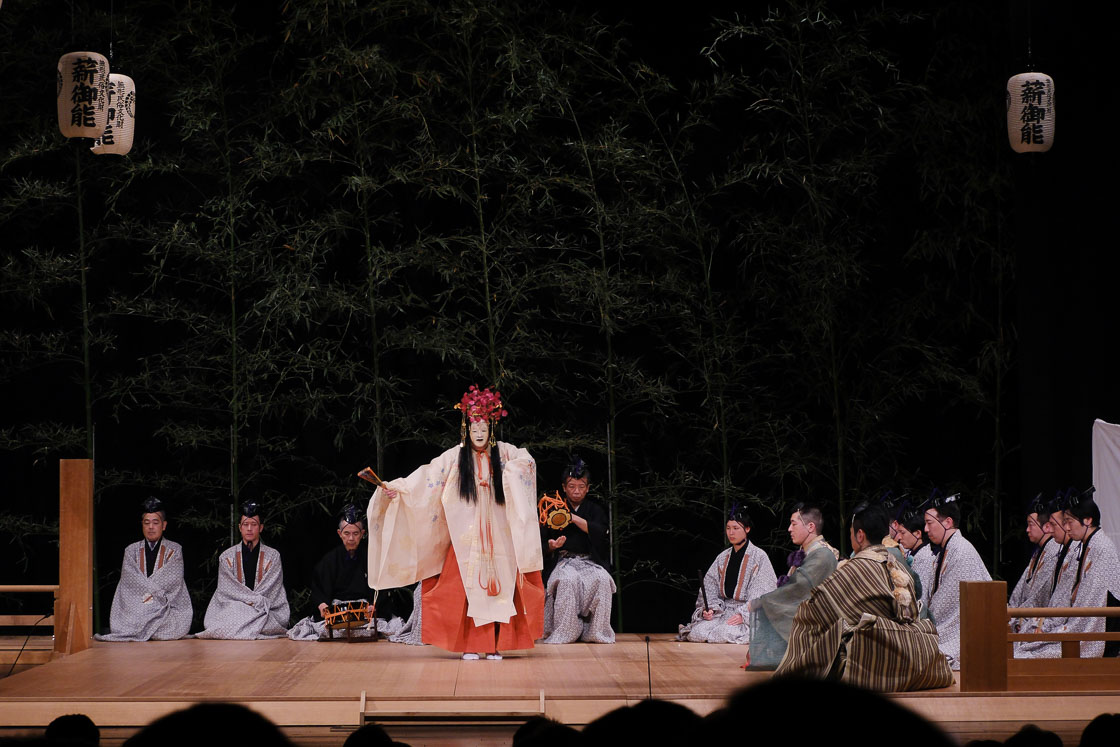
On the first Saturday of October, Kohfukuji holds another kind of nighttime Noh performance called Toei Noh. For Toei Noh, there are no seats directly in front of the stage, for that performance is offered directly to the principal object of worship. It is a solemn, quiet performance with no applause, making for a mysterious, contemplative theater experience.
After such a long day of filling my mind with new information and thought-provoking experiences, I was ready to enter a truly dreamlike state at Hotel Nikko Nara, conveniently located just outside the west exit of JR Nara Station.
Day 2 - A VR Temple Tour and Tea
I timed my trip for the mid-May Takigi O-Noh performance, but thanks to the breakfast buffet filled with Nara cuisine, I was able to try a traditional winter dish of Kohfukuji: kasujiru, a soup with broth made from sake lees. This dish is served throughout the year at Hotel Nikko Nara.
Kasujiru is commonly eaten throughout the Kansai region, though it has many different local variations. Kohfukuji is one of many temples that hosts rituals for the Setsubun holiday in early February, during which the participants cast off any remaining bad luck from the previous year and prepare to start spring on a high note. It is still very cold at that time of year, so the staff that help out with the event are served this creamy, nourishing soup filled with root vegetables like carrots, radishes, and burdock. Hotel Nikko Nara proudly worked under the tutelage of monks at Kohfukuji to get the flavor right.

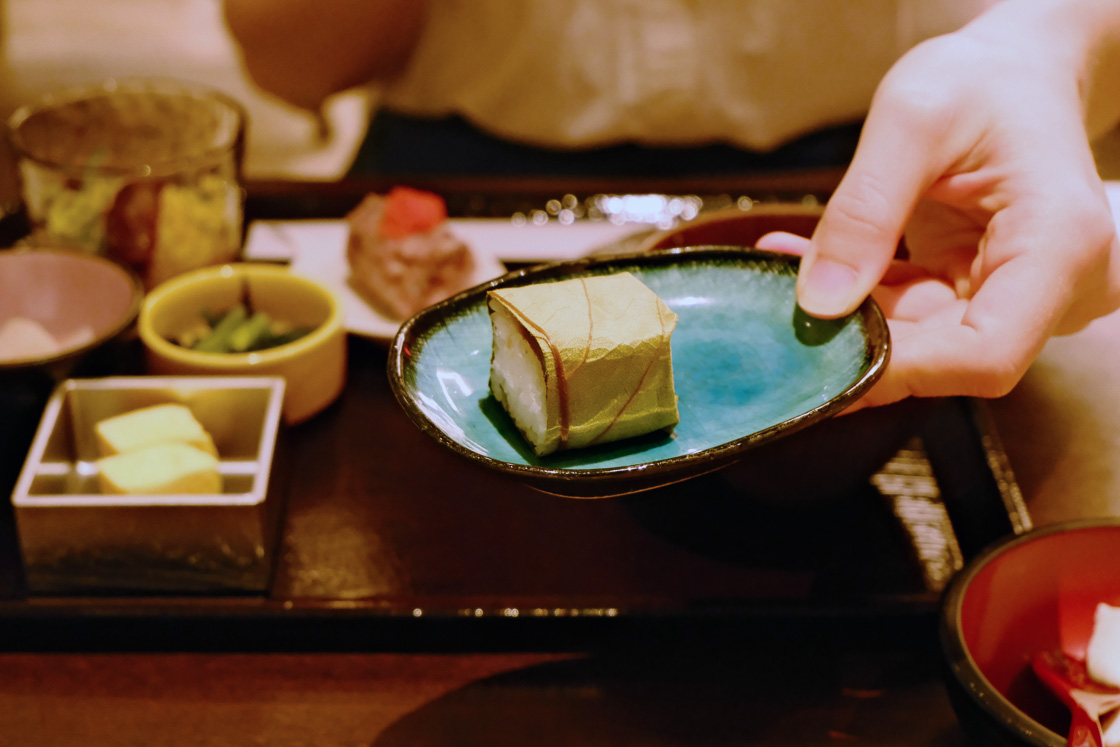
This breakfast powered me up for an early morning stroll in Nara Park, which made it easier to get photos of deer before the area got more crowded. I also got an early start on a self-guided exploration of Kohfukuji. The buildings were not open yet, but thanks to the Kohfukuji Temple Tourism Visual Guide, I got a closer look inside than would otherwise be possible.
The virtual reality (VR) tour QR code is posted onsite and requires an access key, which is posted in the same location as the QR code. When the content is renewed in autumn of 2025, getting access to the virtual tour will be even simpler. Once you enter the website, you can look at temple buildings from a bird's eye view, from inside the building, and as if you were back in time. From the ground, the architecture is overwhelming: The grandeur makes it hard to tell where to look or what is unique. This VR guide helped me by keeping the overviews brief and quickly diving into the most interesting details about each building. Beyond that, it even gave me a look inside at many of the statues and murals.
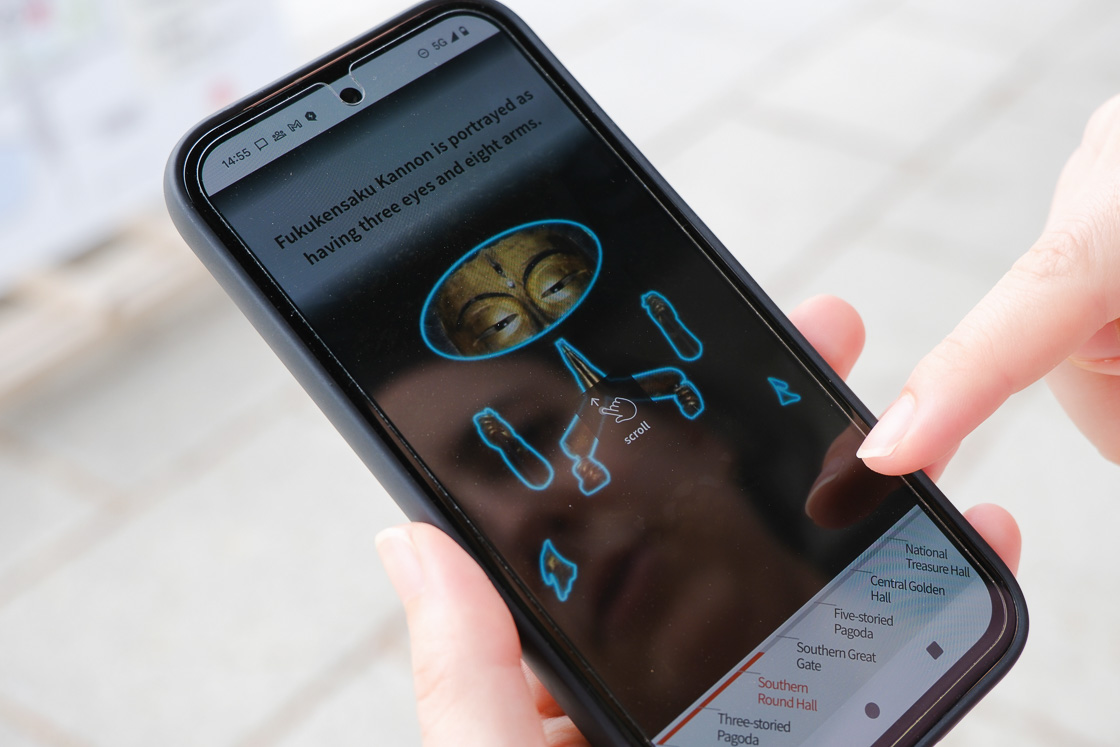
This also gave me a way to appreciate the Five-storied Pagoda while it is undergoing restoration work! Although learning about it was the highlight of using the VR tour, being able to take a VR selfie with it was a nice touch. Who knows what features the renewed content will have this autumn? It might be worth another visit to find out!
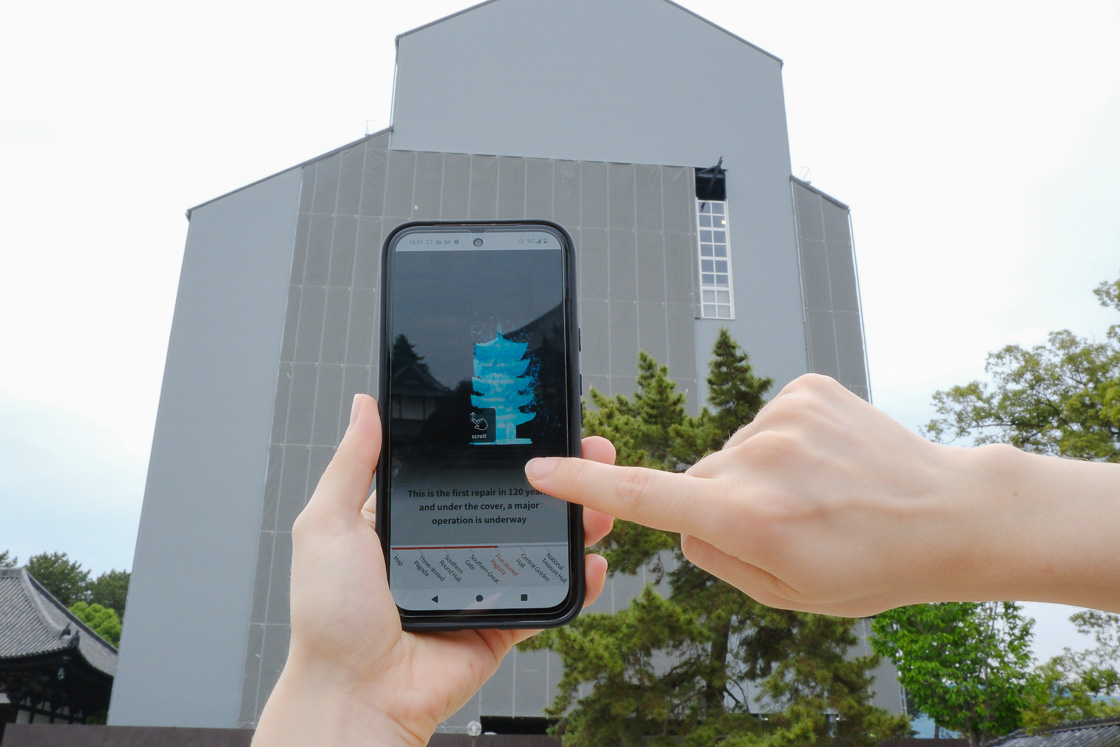
Before finishing my travels around Nara Park, I stopped to do some gift shopping at Nakagawa Masashichi Shoten's Nara flagship store. Nakagawa Masashichi Shoten products, recognizable for their red and gold logo with two deer, are sold all over Nara, but there is an especially wide selection at the modern and stylish Shika Saru Kitsune ("Deer Monkey Fox") building.
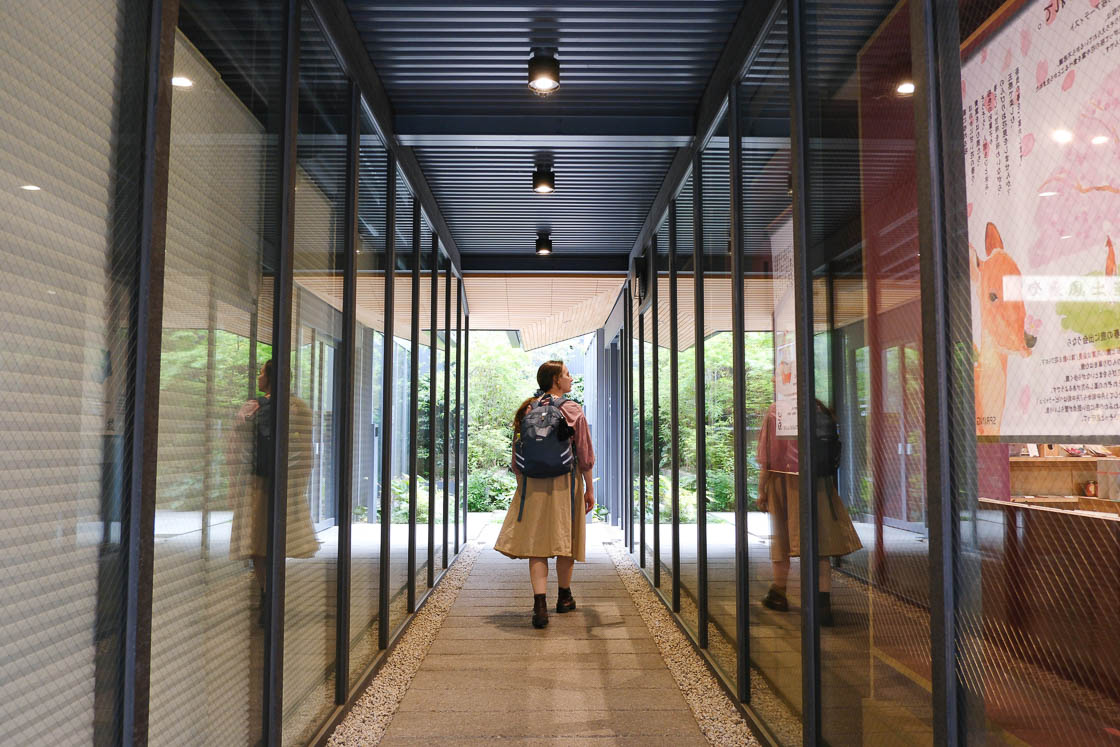
Nakagawa Masashichi Shoten started in 1716 as a wholesaler for "Nara-Sarashi" ramie fabric, which was often used in formal samurai attire. In recent years, they have made it their mission to revitalize a wide variety of traditional Japanese crafts. The second floor of the store has rows of quality products spanning everything from hand towels to ceramics, confections, and kitchen sponges. Every product is as well designed as the shopping experience; the large windows, soft background music, and silent video footage of craftspeople at work together make for a clean, modern aesthetic space.
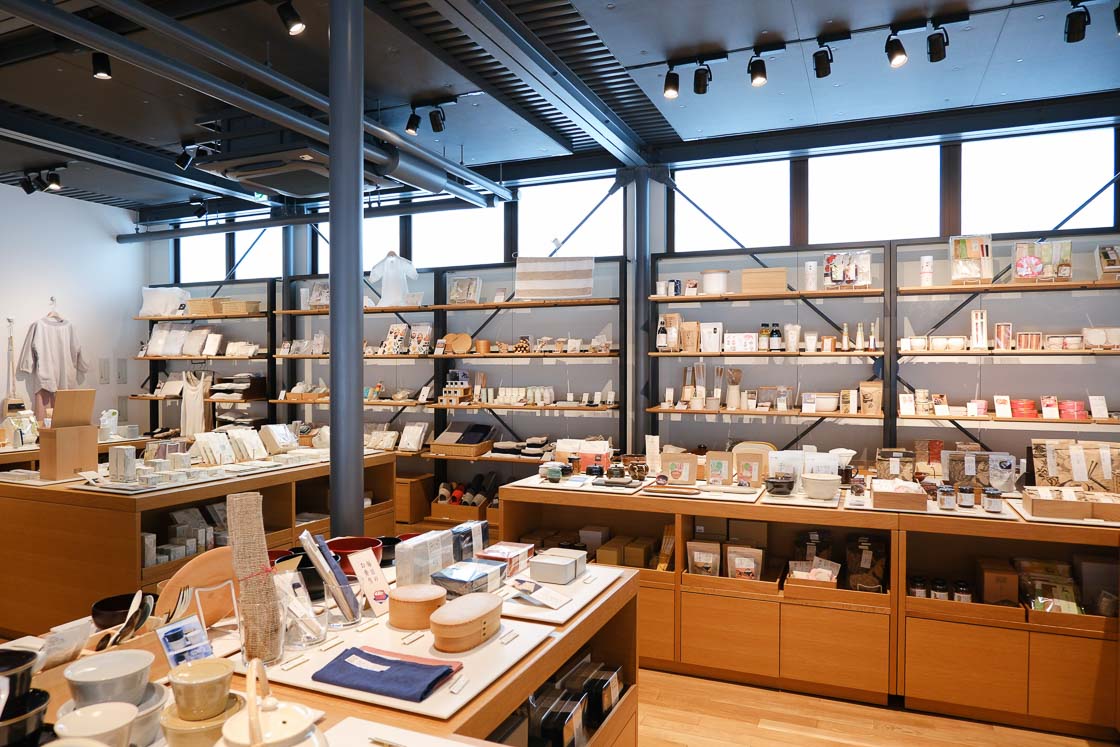
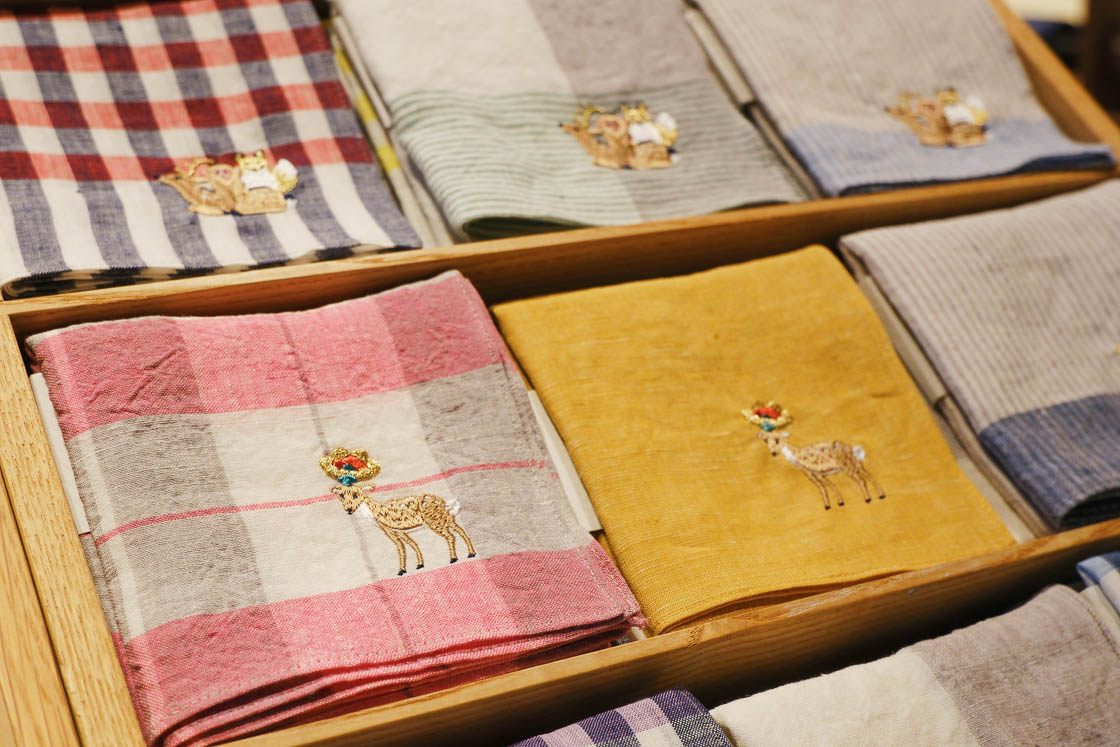
Kohfukuji Temple is situated among one of the most bustling areas of Nara Prefecture, and it gave me many ways to consider how Buddhism has influenced different aspects of Japanese art and culture. However, many quiet areas of Nara Prefecture also provide a deeper look at this. That is why I headed to Ikoma, a small city to the west. It was a 40 minute train journey from Kintetsu-Nara Station to Gakken-Kita-Ikoma Station, with one easy transfer at Ikoma Station from the Kintetsu-Nara Line to the Kintetsu-Keihanna Line. From there, I had a simple 10 minute walk through a quiet neighborhood to Sousian, a restaurant with whimsical, cozy decor, from its garden entrance to its stained glass skylights.
Sousian's menu is crafted around fresh mushrooms sourced from growers across Japan. I had the basic lunch, which included multiple courses that cleverly used a broad array of colors, textures, shapes, fragrances, and tastes. Some courses featured familiar varieties, like wood ear mushrooms or maitake, and some I had never seen before, like a big, fluffy looking Lion's Mane. The beef and salmon were complements to the mushrooms in this meal, but many local people also frequently visit for steaks with mushroom sauce. Reservations are encouraged but not required.
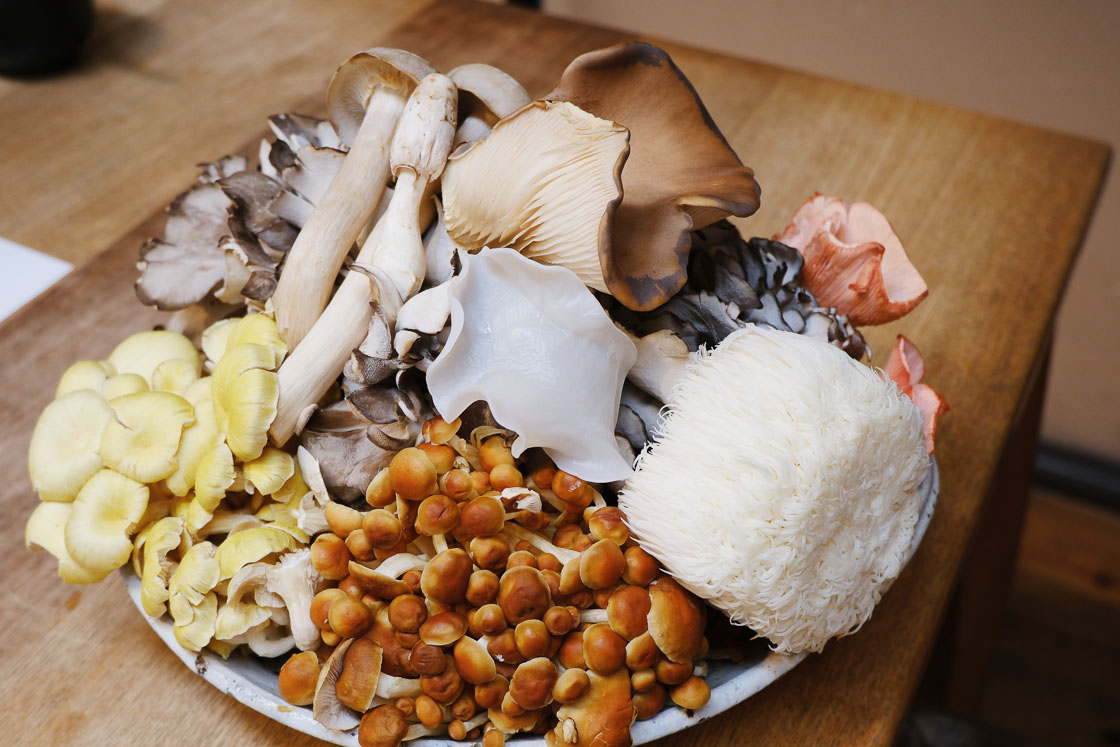
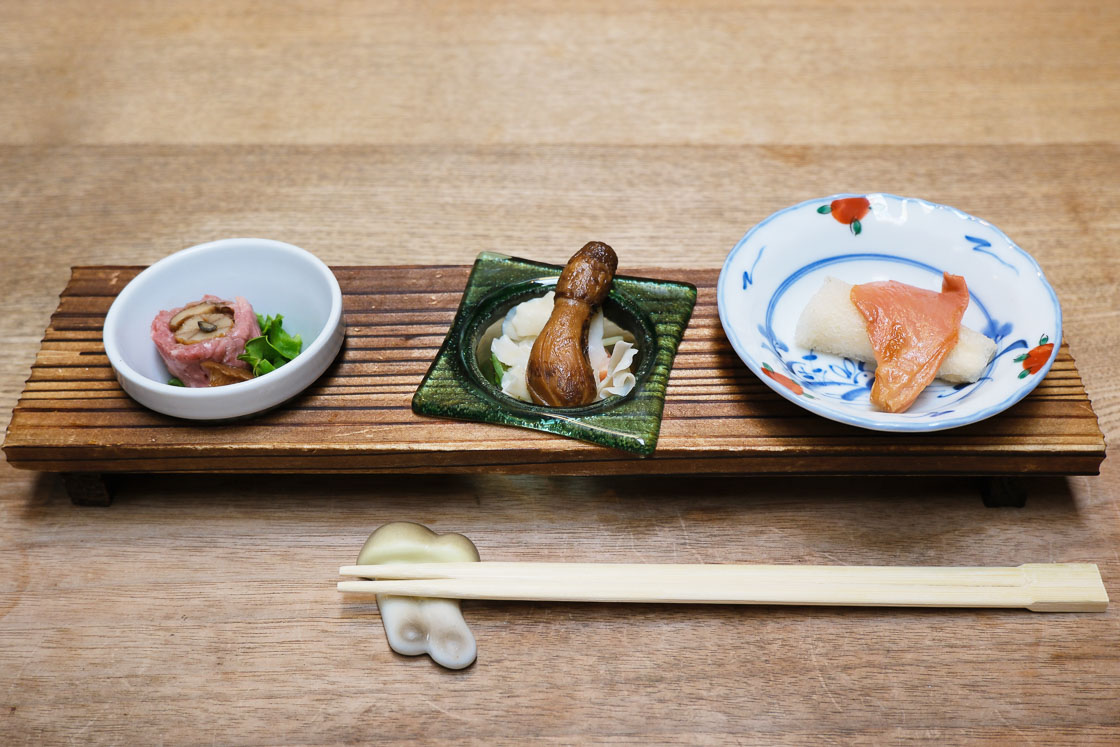
After that, I took a 20 minute bus ride to Ikoma's Takayama area, a neighborhood known throughout Japan for chasen, the bamboo whisks used for preparing matcha in the tea ceremony.
The tea ceremony is closely linked to Buddhism, and Buddhism has influenced a lot of the mindset behind this art form's development. The tea ceremony draws one's attention to the present moment - a unique moment that will never again come to pass, even if the tea, tools, and guests are all the same.
In this quaint rural neighborhood with a bamboo forest, the Tanimura family has crafted tea whisks for almost 500 years. Tanimura Tango, the twentieth generation head of the family, provides tours and workshops (reservations required at least 10 days in advance). The tour started with a 45 minute demonstration of how the whisks are made, followed by the opportunity to sit in a traditional tea room, appreciate the garden, and use a tea whisk to froth matcha in a tea ceremony.

Appreciating all the soft sounds, like the boiling of water and gentle scraping of the whisk against the sides of the tea bowl, is a meditative aspect of the tea ceremony. I found that I also got a lot of spiritual training by being patient with myself for not achieving a satisfyingly frothy cup of matcha on the first try.
Thankfully, I can keep practicing, because I now have a tea whisk of my own - one that I threaded myself! This was an optional workshop provided by Tanimura-san. Although the delicate process of cutting the bamboo into dozens of delicate prongs is already done for you, threading also requires care and concentration. Tanimura-san helps everyone work at their own pace, so it felt easy to give my whisk its finishing touch.
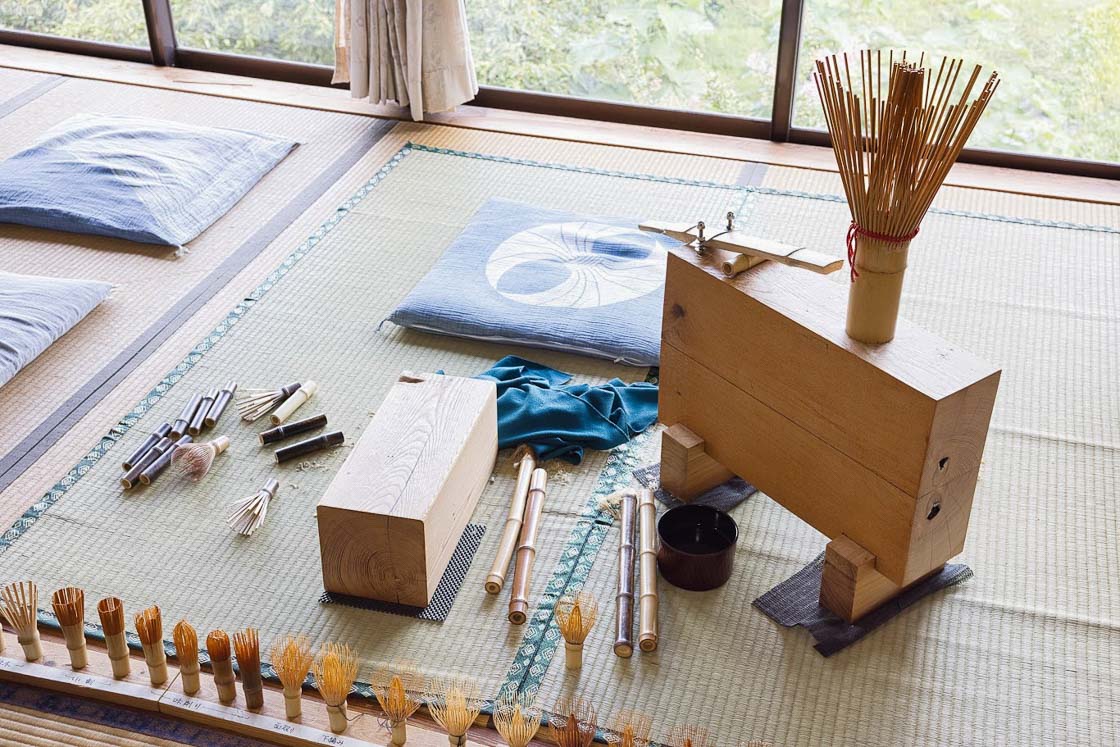
I concluded my two-day journey in Nara by buying some Yamato-cha (tea grown in Nara) to take home, as that will be one of the tastes of this trip that I can try to recreate on my own.
Visiting Kohfukuji and learning more about Buddhist statues and architecture gave me a new way of looking at Japanese Buddhist temples that I may visit in the future. With Kohfukuji being so easy to access, there is always the chance I might come back to take part in another activity or tour, like getting a chance to ring the temple bell. In the meantime, I look forward to using my handcrafted tea whisk and ink to make a habit of the meditative practices I tried out. I wonder how much I'll have improved by the time I return to see Kohfukuji's Five-storied Pagoda in all its restored glory.
Tours and experiences introduced in this article
- Handheld Ink (Nigiri Sumi)-Making Workshop in Nara
- Toei Noh Performance and Lecture from a Noh Expert
- Tea Ceremony, Lunch, and Tea Whisk-Making Experience
Other tours and experiences at Kohfukuji Temple and around Nara
- Kohfukuji Bell-Ringing Experience
- One-of-a-kind Calligraphy Art at Kohfukuji
- Kashihara Shrine & Imaicho Town Historical Tour

